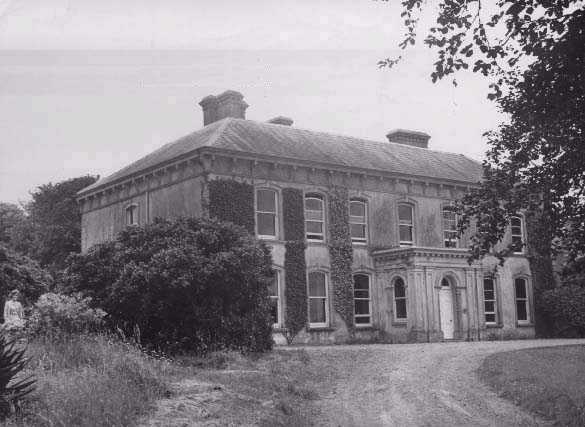Pyne Info
In Ireland families of the name have been located mainly in Co. Cork with a few in Co. Clare and some other Munster counties. It has been in this country continuously for four centuries, at least since Robert Pyne was the Earl of Ormond's attorney in 1599. In modern times some of them are found among the Catholic farming and trading community, but for the most part they have been of the Protestant gentry class. Henry Pyne was one of the commissioners appointed to survey the property in Co. Tipperary to be allotted to Royalist officers after the Restoration; Henry Pyne was a Poll-Money Commissioner for Co. Cork in 1660 and 1661 and in the next generation Chief Justice Sir Richard Pyne was a prominent figure in the administration. 20 Pyne wills, nearly all in counties Cork and Clare, are recorded, but the originals of these were for the most part lost in the destruction of the Public Record Office in 1922.

An excerpt from an account of The Pyne Family,
by Dorothy Phipps (nee Pyne) of Kilcor Castle, Castlelyons, Co. Cork.
Dorothy Phipps was born and grew up at Ballyvolane House. (pictured above)
Between the years of 1690 and 1702, Sir Richard Pyne was appointed Lord Chief Justice of Ireland. He came to Dublin with his wife, Lucy, the daughter of the Duke of Montague, and his son Henry. After a while, he came south and bought Blarney castle. However he was unsure of the title and only lived there for a short time. He sold it and moved to Waterford on the river Blackwater near Ballyduff. All that remains of his large house is now a lump in a field. From there he acquired Ballyvolane from the Coppingers. It is said that £900 was paid not only for the house, but also for the farm and the entire property as well. The Coppingers had lived in an older house at Ballyvolane for many hundreds of years.
Sir Richards' son, Henry Pyne, married Miss Sarah Bradshaw. Henry was killed in a duel with a man called Biddulf in England. There is a legend that when his mother, Lady Pyne, was walking in their garden at Codhaw Hall in Essex, she saw her son and called him but he disappeared. She then went back to the house only to hear that he had just been killed.
Henry left a daughter, Anne, who married one Sir Henry Cavendish, and their son, Richard, succeeded to Ballyvolane, followed by his son, Jonathan, who married Dorothy Giffard of nearby Aghern Castle. They were partly responsible for the building of Aghern Church and are buried under its doorway.
Arthur Pyne, the son of Jonathan and Dorothy, married Mary Masters of Castle Masters, Macroom. He enlarged the house in the early nineteenth century. He had 2 sons and 5 daughters (one being Sarah later to marry Denis O'Callaghan). Jasper, the eldest, succeeded to Ballyvolane. He was a very wealthy man and married 3 times, all to women with money, and the property in Essex was paying very well. He lived in great estate, employing over 30 people both inside and outside the house. His manager was one Thomas Pennefeather, who ran the place from his office at the top of the granary steps. Jasper kept a large stable of horses and improved the place by planting trees and laying out gardens and leisure grounds.
His first wife, Miss Mary Masefield had twin sons who died at early ages ö she and her sister were the sole survivors of a family of seventeen. He then married Miss Parker of Carrigane and had three daughters. His third wife was Miss Garde-Browne of Coolcomer, Macroom. As his kin were entirely female, it was his nephew, George Pyne, who succeeded him. He also improved the place by pulling the house to pieces ö he removed the top storey making it two storeys instead of three and built a wing onto the west end of the house. He also moved the stables from the house yard to the newly built farmyard. Under the roof in the attic, the blue and white wallpaper can still be seen in patches on the wall of one of the third storey rooms.
When Jaspers' third wife succeeded to his personal property, all the furniture was sold, though she kept the silver and various other items. On hearing of her death, George Pyne went to Paris for her funeral with her other nephew Sir George Garde-Browne. The envelope of her will was found ö it was empty, so all the silver passed to the Garde-Browne family. George Pyne died in 1909 having broken the estate. He left it to his wife Fanny Durger, a near neighbour. When she died her son Brigadier Henry Pyne succeeded her but only lived a few years. He left it to his wife who lived there a short time and then sold it in 1955. It was bought then by Mr. and Mrs. Green, whose son now lives there and farms the place.
from the Ballyvolane House website which has fantastic pictures of the interior/exterior and gardens.
Click here to go to the Pyne Forum on Geneaology.com